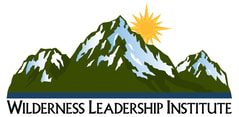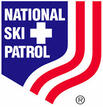Snowpack Summary January 16, 2023
Posted by Allen Giernet @ 9:00 pm (this summary expires in 24 hours)
This summary applies to backcountry areas only.
The Bottom Line – Hazardous conditions exist in the mountains travel in avalanche terrain not advised
The storm will slowly move out this evening after bringing fluctuating tempertures through the past 3 days. We have a variety of problems in the wake of this last storm and mountain conditions are hazardous. Expect the moisture laden snow at lower elevations to freeze overnight and into tomorrow as temperatures remain below freezing. Slide for life conditions will be possible. Travel in avalanche terrain is not advised at this time.
#1 problem is refreezing moisture saturated snow. This will bring fast firm slide for life conditions. Use of ice axe and crampons is recommended with the skill to use them. Snow below 8,000’ was reported to be moisture saturated at the surface from observations Monday morning.
#2 problem will be Wind Slab avalanches on Northeast to Northwest aspects due to the moderate to strong Southwest winds. Wind slabs can be possible on any aspect due to topographical influences look for the signs of drifting and blowing snow, wind textured surfaces and pillowed snow below ridges and on sides of gullies. If these signs are present avoid those slopes and stick to lower angle terrain <30°.
#3 problem Storm Slabs Avalanches above 8,000’. This will be possible on all aspects. Avoid slopes over 30° if you see signs of significant accumulation or sluffing snow. This type of problem may knock you off your feet and take you into nasty terrain.
There will be a mix of conditions and using your own judgement and observations will be key. Adding to the problems is that it will still be early season conditions at the lower elevations with exposed obstacles so a slip and fall can bring hazardous consequences. Exercise caution if venturing out into the mountains and use avalanche protocols, travel with a partner and bring your beacon, shovel and probe.
Please share any information when you are out in the mountains. Even a photo is helpful.
Please share your observations with us at the avalanche center Submit Reports page.
Posted by Allen Giernet @ 9:00 pm (this summary expires in 24 hours)
This summary applies to backcountry areas only.
The Bottom Line – Hazardous conditions exist in the mountains travel in avalanche terrain not advised
The storm will slowly move out this evening after bringing fluctuating tempertures through the past 3 days. We have a variety of problems in the wake of this last storm and mountain conditions are hazardous. Expect the moisture laden snow at lower elevations to freeze overnight and into tomorrow as temperatures remain below freezing. Slide for life conditions will be possible. Travel in avalanche terrain is not advised at this time.
#1 problem is refreezing moisture saturated snow. This will bring fast firm slide for life conditions. Use of ice axe and crampons is recommended with the skill to use them. Snow below 8,000’ was reported to be moisture saturated at the surface from observations Monday morning.
#2 problem will be Wind Slab avalanches on Northeast to Northwest aspects due to the moderate to strong Southwest winds. Wind slabs can be possible on any aspect due to topographical influences look for the signs of drifting and blowing snow, wind textured surfaces and pillowed snow below ridges and on sides of gullies. If these signs are present avoid those slopes and stick to lower angle terrain <30°.
#3 problem Storm Slabs Avalanches above 8,000’. This will be possible on all aspects. Avoid slopes over 30° if you see signs of significant accumulation or sluffing snow. This type of problem may knock you off your feet and take you into nasty terrain.
There will be a mix of conditions and using your own judgement and observations will be key. Adding to the problems is that it will still be early season conditions at the lower elevations with exposed obstacles so a slip and fall can bring hazardous consequences. Exercise caution if venturing out into the mountains and use avalanche protocols, travel with a partner and bring your beacon, shovel and probe.
Please share any information when you are out in the mountains. Even a photo is helpful.
Please share your observations with us at the avalanche center Submit Reports page.

Wind Slab avalanches are the release of a cohesive layer of snow (a slab) formed by the wind. Wind typically transports snow from the upwind sides of terrain features and deposits snow on the downwind side. Wind slabs are often smooth and rounded and sometimes sound hollow, and can range from soft to hard. Wind slabs that form over a persistent weak layer (surface hoar, depth hoar, or near-surface facets) may be termed Persistent Slabs or may develop into Persistent Slabs.

Storm Slab avalanches are the release of a cohesive layer (a slab) of new snow that breaks within new snow or on the old snow surface. Storm-slabs typically last between a few hours and few days (following snowfall). Storm-slabs that form over a persistent weak layer (surface hoar, depth hoar, or near-surface facets) may be termed Persistent Slabs or may develop into Persistent Slabs.
General Summary
Exercise caution on slopes over 30° as these conditions will exist throughout all mountain ranges. Always exercise caution when entering into winter mountain areas. Bring a Beacon Shovel and Probe and know how to use them. Travel with a partner and make conservative decisions.
Exercise caution on slopes over 30° as these conditions will exist throughout all mountain ranges. Always exercise caution when entering into winter mountain areas. Bring a Beacon Shovel and Probe and know how to use them. Travel with a partner and make conservative decisions.
General Mountain Weather Forecast |
Weather Page Link
Click on the links below for the latest information
Click here for this Season's Snow Pack Summaries
To better understand the challenges and potential variability over the large area we are producing information for please read our Snowpack Summary - Format and Limitations
Disclaimer:
This Bulletin is designed to generally describe conditions where local variations always occur. Travelers are advised to exercise caution and make slope specific evaluations. As always, please treat this bulletin with appropriately guarded skepticism and make your own assessments. Help to provide more information to the community by reporting your observations
This Bulletin is designed to generally describe conditions where local variations always occur. Travelers are advised to exercise caution and make slope specific evaluations. As always, please treat this bulletin with appropriately guarded skepticism and make your own assessments. Help to provide more information to the community by reporting your observations
Latest Observtions
Click on the observation to go to the full report
|
Observation type -
Snowpack Location - Big Pines Date (yyyymmdd) - 20230116 Comment - Mother nature has the last laugh (again.) Early AM tour fueled by the prospect of some soft boot-top turns from snowfall that started late afternoon on 1-15-23. From what I can tell, approximately 10-20cm of ~10:1 snow fell from Sunday afternoon into the early AM hours of Monday. Then around 2am a blast of warm wind raised temps above freezing well above 7k ft, soaking the new snowfall with rain. Unclear at this time where the rain/snow line was in the SG mountains, although I would venture to guess at least 8k, if not higher. Winds were absolutely howling over the ridgeline, so my partner and I stayed well below to avoid the 40-50mph blasts. The snow that did fall was quite impressive, and all but the biggest bushes and rocks are now fully covered, even at a moderate altitude of ~7500'. Wind transported snow was evident in the form of small cornices and drifted in pillows--presumably occurring before the rain locked things into a wet, manky mess. A quick pit dug at ~7300ft revealed 45cm of snow with pronounced melt/freeze layers punctuating our various storms this season. Rain has saturated the top 5cm of snow (which likely started as much more). Impromptu CT yielded a Q2 shear at 20cm, on what appears to be the same weak layer of graupel sitting atop an old rain crust. (I observed a failure on the same layer on this slope ~2 weeks earlier). tl;dr - yes, we got snow, but the skiing still mostly sucks. Higher elevations may have soft, dry snow, although I suspect the primary concern will be wind slabs from the strong SW winds sitting on touchy melt/freeze layers from the warm AR events earlier in the season. Fingers crossed that things turn around for us in Feb-Mar. |
Observation type
Snowpack Location - Heart Bar Peak Date (yyyymmdd) -20230115 Comment Toured along the 38 near Heart Bar Peak. On my way up, saw several storm / wind slabs on NW aspects. Due the weather and conditions I stayed a lower elevation, low angle terrain in the trees and found fresh powder. Stomping on the new snow caused some shooting cracks. I managed to trigger a very small storm slab. |
Observation type
Snowpack Location - Eastern San Gabriels Date (yyyymmdd) - 20230115 Comment - Sunrise tour on 1-15-2023 with hopes of finding a few inches of soft snow above 8000ft were met instead with refrozen wintry mix, rime ice and breakable crust. Coverage above 7900ft was decent on NE to NW aspects, with evidence of snow transport apparent on steeper road cuts and behind fallen trees. Many NW slopes near the windward ridge were scraped down to a layer of boilerplate ice (see photo of rime rice on bush protruding through). Stomping on a few test slopes yielded small failures a few cm deep on top of the rain crust yesterday's snow fell onto. Higher altitude, steeper, and/or slopes that received more snow will likely have more significant wind slab issues. Overall, this storm was kind of a bust in the Eastern SG mountains, and consistent with this winter's theme of rain/wintry mix up to 7000' and above on many of our wettest storms. Fingers crossed the next system is colder, as advertised. |
Observation type
Snowpack Location - San Gorgonio area Date (yyyymmdd) - 01082023 Comment - Comment Riding and skinning up the ridge from South Fork trailhead to Alto Diablo was difficult below ~8500 feet due to only a few inches of snow on top of bushes. ~150cm deep pit. Starting from the base, a few inches is ice melt-freeze crust. Then ~6 inches of finger hardness. Crust (failure at this layer). ~4 inches of 4finger+. Another crust. ~4 feet of slab ranging from 4finger to fist. On top of that ~1 inch of stiffer wind affected snow, unknown hardness. The column test did not fail on compression BUT this may have been due to poor isolation on the back of the column. The slab popped off at the bottom crust when pulling it down. |
General Caution
You should always use safe terrain management and carry avalanche rescue equipment in the backcountry. Most avalanches are triggered by someone in the party or the victim. Practice with your rescue gear often and be prepared should the worst happen. Though we do not have an avalanche forecast center in this area as of yet, the information posted and shared here as well as the resources available on this site will help to make informed decisions for your backcountry travels. Use avalanche forecasts in your travels wherever available and be aware that avalanche ratings are general information. Elevation, location, geographic variability’s, slope aspect and angle all have effects on the particular area you travel in. This is only one piece of the information you should use in your decision making process. There is no substitute for avalanche education, for more resources and information as well as education please refer to our resources page.
You should always use safe terrain management and carry avalanche rescue equipment in the backcountry. Most avalanches are triggered by someone in the party or the victim. Practice with your rescue gear often and be prepared should the worst happen. Though we do not have an avalanche forecast center in this area as of yet, the information posted and shared here as well as the resources available on this site will help to make informed decisions for your backcountry travels. Use avalanche forecasts in your travels wherever available and be aware that avalanche ratings are general information. Elevation, location, geographic variability’s, slope aspect and angle all have effects on the particular area you travel in. This is only one piece of the information you should use in your decision making process. There is no substitute for avalanche education, for more resources and information as well as education please refer to our resources page.






















